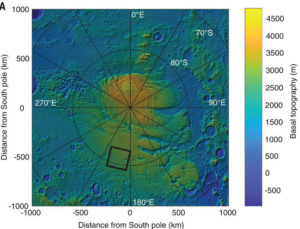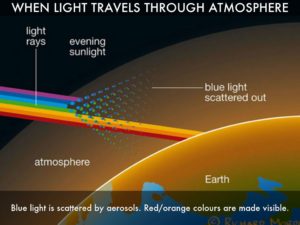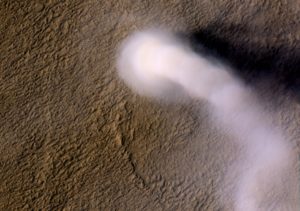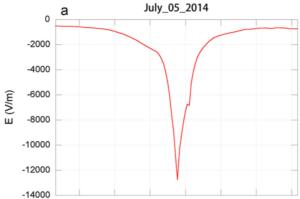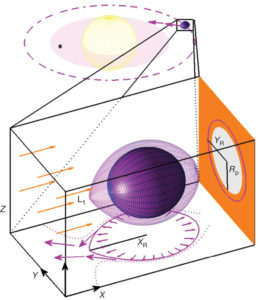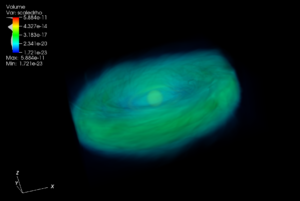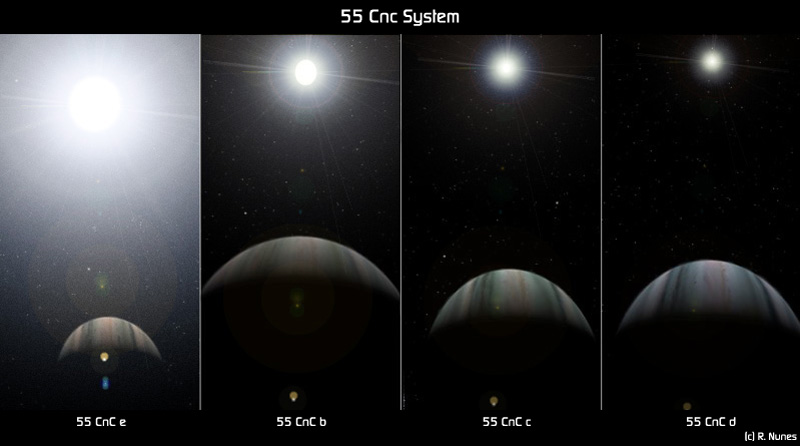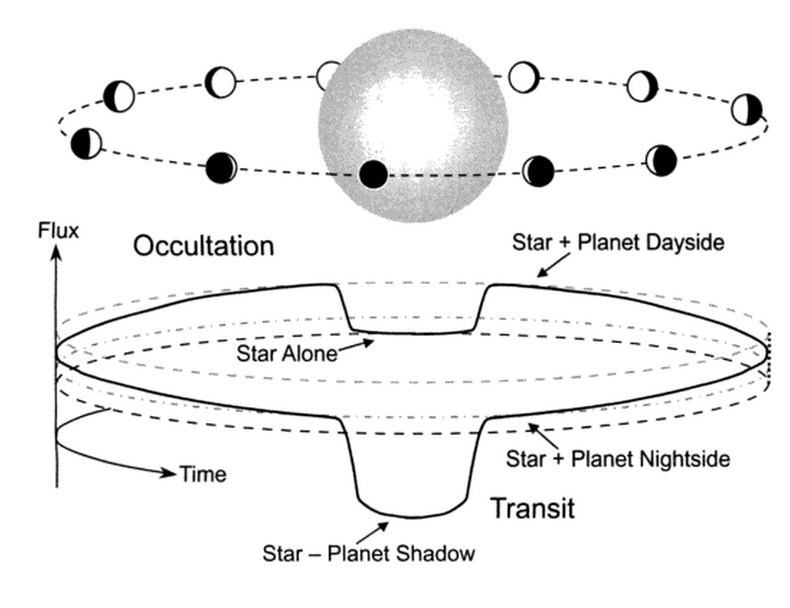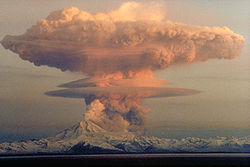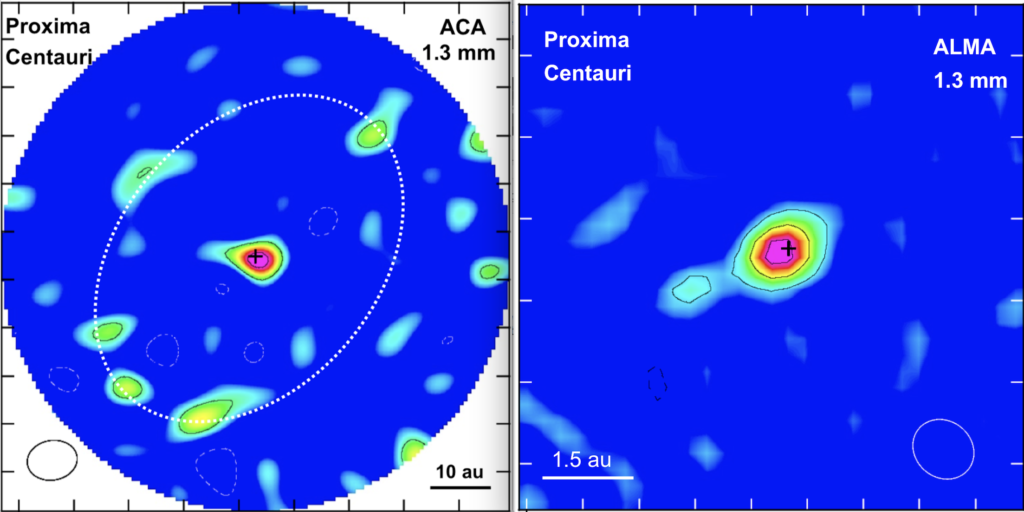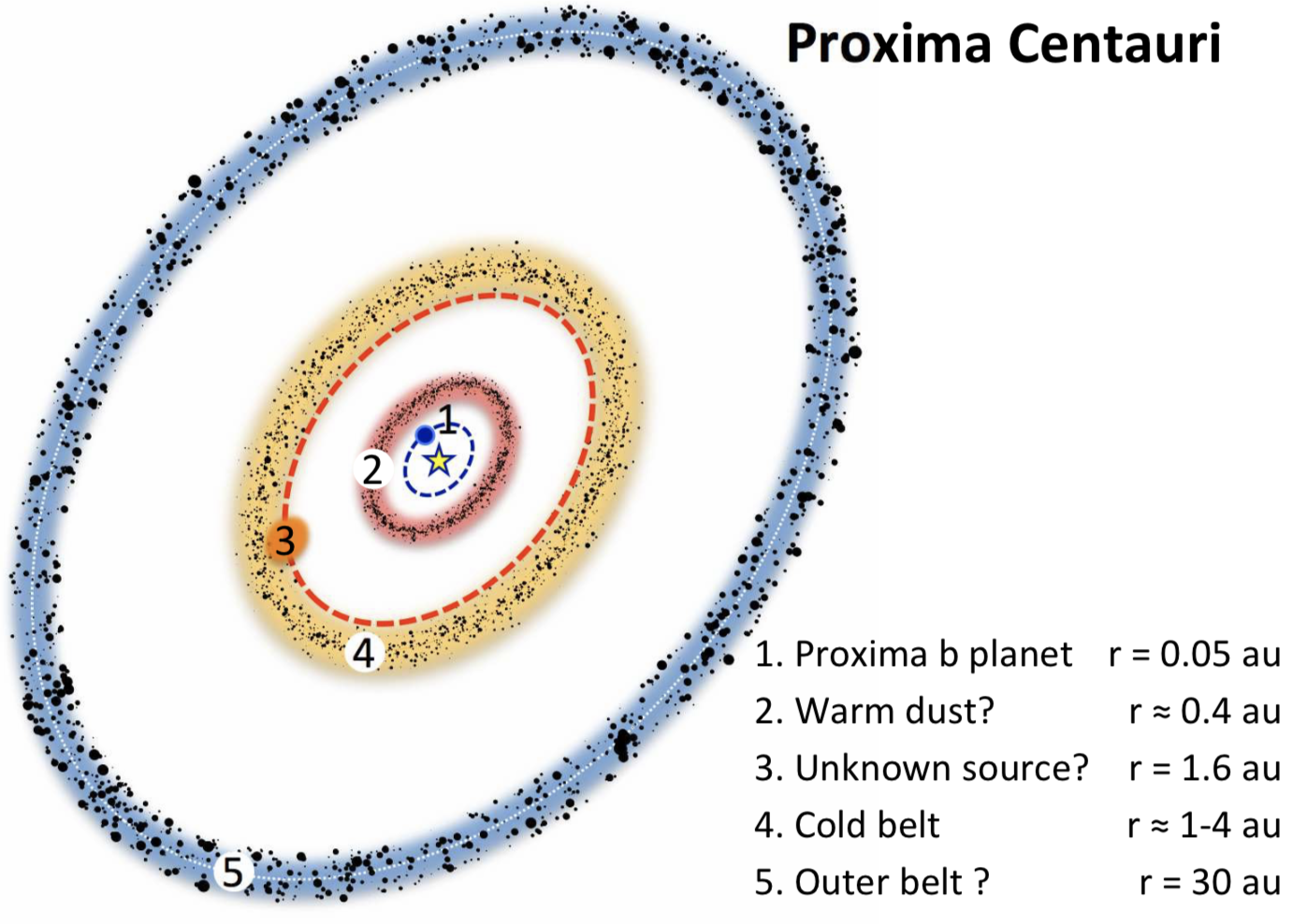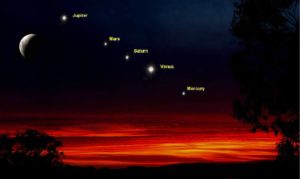
Artist’s impression of planet alignment in 2016. From here.
Anyone who’s done some stargazing has probably noticed that the Sun and the Moon appear along nearly the same arc in the sky. This Sun’s arc, called the ecliptic, corresponds to the plane of the Earth’s orbit. Since all planets in the solar system share nearly the same orbital plane, they likewise hew close to this arc. It turns out that the ecliptic also coincides closely with the Sun’s equator.
The near alignment of all planetary orbits in the solar system is one of the most important clues to their formation – the solar system originated billions of years ago from a thin disk of gas and dust girding the young Sun’s belly like a hula hoop, an idea going back at least to Immanuel Kant in the 1700s called the Nebular Hypothesis.
Once it was accepted, this idea was so successful at explaining and predicting features of the solar system, astronomers believed all planetary systems in our galaxy would resemble our own – with small, rocky planets close to their stars and large, gassy planets farther away, but all sharing the same orbital plane.
The discoveries of thousands of exoplanets have turned all that on its head – planets around other stars have orbits oriented every which way. For example, the Upsilon Andromeda system has three Jupiter-like planets, all on orbits that are widely misaligned.
Although these topsy-turvy planetary orbits were initially puzzling, astronomers are starting to tease out the explanations for these systems. Planets probably do start out in well-aligned orbits, but, like kids in the backseat on a long car trip, jostling between the planets (due to mutual gravitational tugs) soon upsets this delicate arrangement and upends the orbits. In the case of Upsilon Andromeda, planets may even have been ejected from the system.
A recent study from Fei Dai and colleagues explored connections between orbital misalignment and the origins of one puzzling class of exoplanet – small, short-period planets. These planets range in size (and probably composition) from Neptune-like to smaller than Earth but inhabit orbits very close to their host stars, some taking only hours to circle the star. Many of these short-period planets also have sibling planets farther out, and the arrangement of these orbits might tell us how the planets got so close to their stars.
As for the Upsilon Andromeda system, the mutual inclination between the orbits, if its big, may point to a history of violence in the system. Such violence may explain how the short-period planets got so close to their stars – they could have started out far away and been thrown by their siblings toward the star. By contrast, a small mutual inclination could mean the system has always been relatively quiescent, and the short-period planets may have gently migrated inward from farther out.
By analyzing the transit light curves of the planets as observed by the Kepler spacecraft, Dai and colleagues found a pattern in the mutual inclinations for these systems. From their paper, the figure below shows that when the distance of the shortest-period planet in a system a/R* is larger, the mutual inclination ΔI between orbits tends to be less widely distributed.

Figure 3 from Dai et al. (2018).
What does this result mean? Since the short-period planets closest to their stars (small a/R*) also seem to have a very wide range of mutual inclinations, maybe they experience the same kind of gravitational jostling that took place in Upsilon Andromeda, while planets farther out, they were moved in more gracefully.
Taking a wider perspective, evidence is mounting that, while planetary systems are common in the galaxy, our own solar system is unique in many ways – there’s really no place like home.
